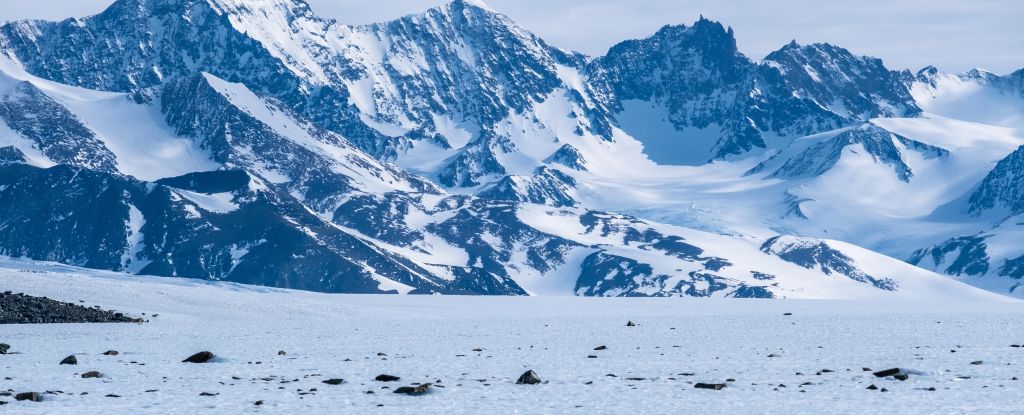A new analysis suggests that warming temperatures in Antarctica are making the ice softer, causing meteorites to sink beyond our reach.
In the coming decades, we could lose around 5,000 meteorites a year - anarchive of the Solar System and, potentially, interstellar space that will end up disappearing forever.
These meteorites represent an unparalleled resource for the study of our little corner of the Milky Way. They consist of pieces of asteroids that formed in the early days of the Solar System, or pieces of another planet or our own Moon that broke loose and were hurled towards us.
Some even contain interstellar material that completely predates the Solar System.
In addition to the thousands of tons of space dust that scatter endlessly across the sky, these pieces of rock fall to Earth with some regularity.
They are no more likely to fall in Antarctica than anywhere else, but an icy wasteland that is relatively unchartered is the ideal place to go meteorite hunting.
On this icy continent, the contrast between the chunks of dark rock and the white ice makes meteorites much easier to find. There aren't many terrestrial rocks above the ice either, so if you find a stone, the chances are good that it's from space.
Finally, the cold, dry desert environment means that meteorites are better preserved in Antarctica, so even if a meteorite has been sitting there for a while, it's likely to be in good condition.
As meteorites are more likely to remain intact in Antarctica, the objects found there are not just small databases that can tell us about other worlds or the beginnings of the Solar System.
They can help scientists discover the rate at which meteorites hit our world, which is extremely important when it comes to defending the Earth from potentially dangerous impacts.
Scientists collect an average of around 1,000 meteorites from Antarctica every year, according to Science Alert.

Recently, a team of scientists led by glaciologists Veronica Tollenaar, from the Free University of Brussels, and Harry Zekollari, from ETH Zürich, compiled a map of where these rocks are most likely to be found and how many are waiting, discovering that between 300,000 and 850,000 meteorites could splash the icy continent, many of them up to a million years old.

Now, the researchers have taken their work a step further, with new estimates of how long these meteorites will be waiting to be collected.
The prognosis is not good.
We know from previous studies that the concentration of Antarctic meteorites is incredibly sensitive to temperature. Hardly any meteorites have been found where surface temperatures exceed -9 degrees Celsius, even for brief periods.
Modeling has also shown that meteorites can sink into the ice at temperatures above -10 degrees Celsius.
In some regions, this amount could be 50%; and, in the highest emissions scenarios of up to 5.2°C of warming above pre-industrial levels by 2100, up to 76% of Antarctic meteorites will sink beneath the ice in the coming decades.
"The continued loss of Antarctic meteorites is a consequence of climate change," write the researchers in their article, published last week in the journal Nature Climate Change.
"It is necessary to collect all the meteorites quickly in order to preserve the information about our Solar System that each additional sample contains: for example, information about the emergence of life on Earth through the supply of water and organic matter, and about the formation of the Moon," the researchers add.
A concerted effort would be similar in spirit to what is currently being done in ice core research, where ice samples collected from disappearing but unique glaciers - such as the few remaining tropical glaciers - are kept in long-term archives.
Ultimately, however, the only way to preserve Antarctic meteorites that have not yet been recovered is to rapidly reduce greenhouse gas emissions, conclude the study's authors.





